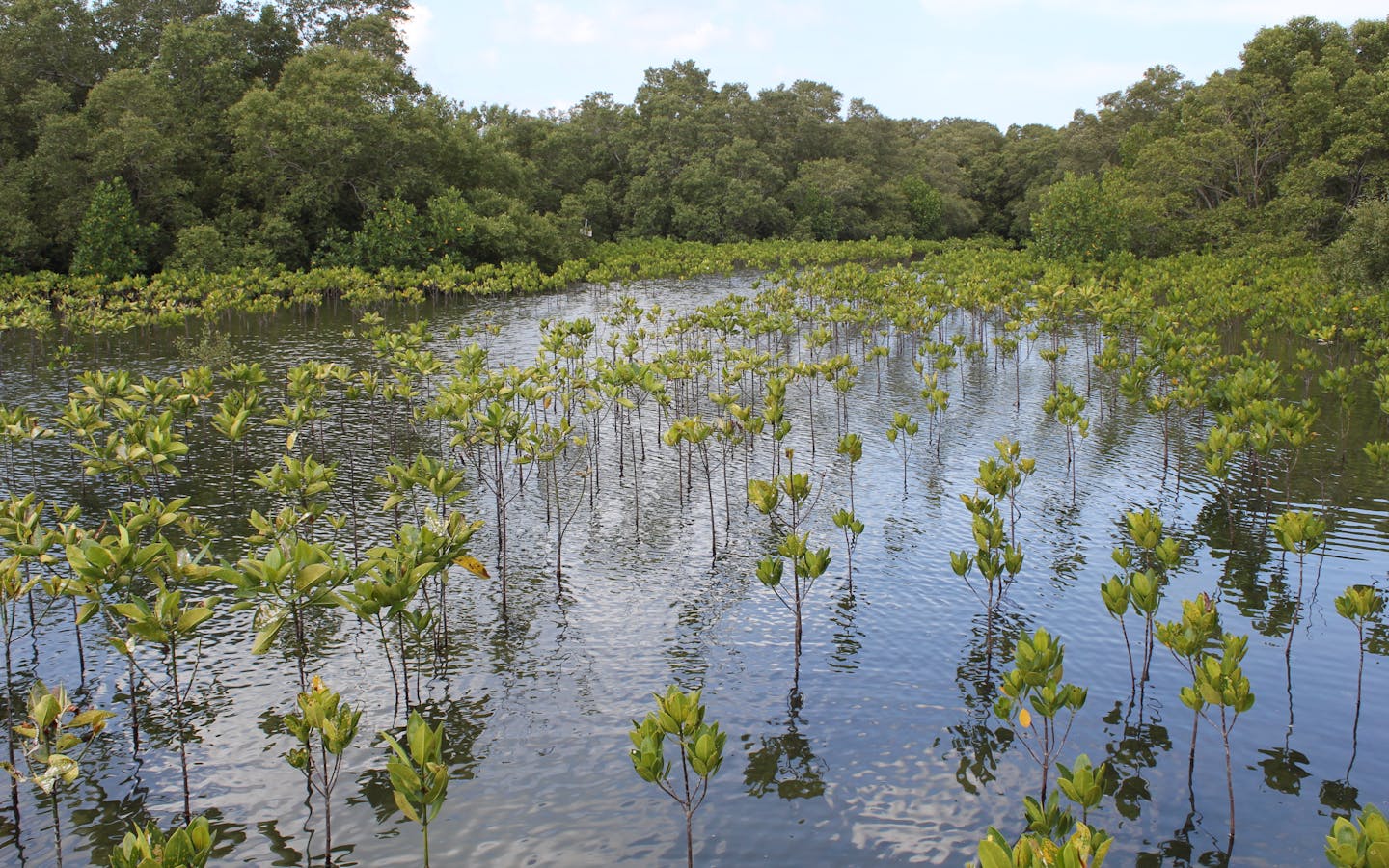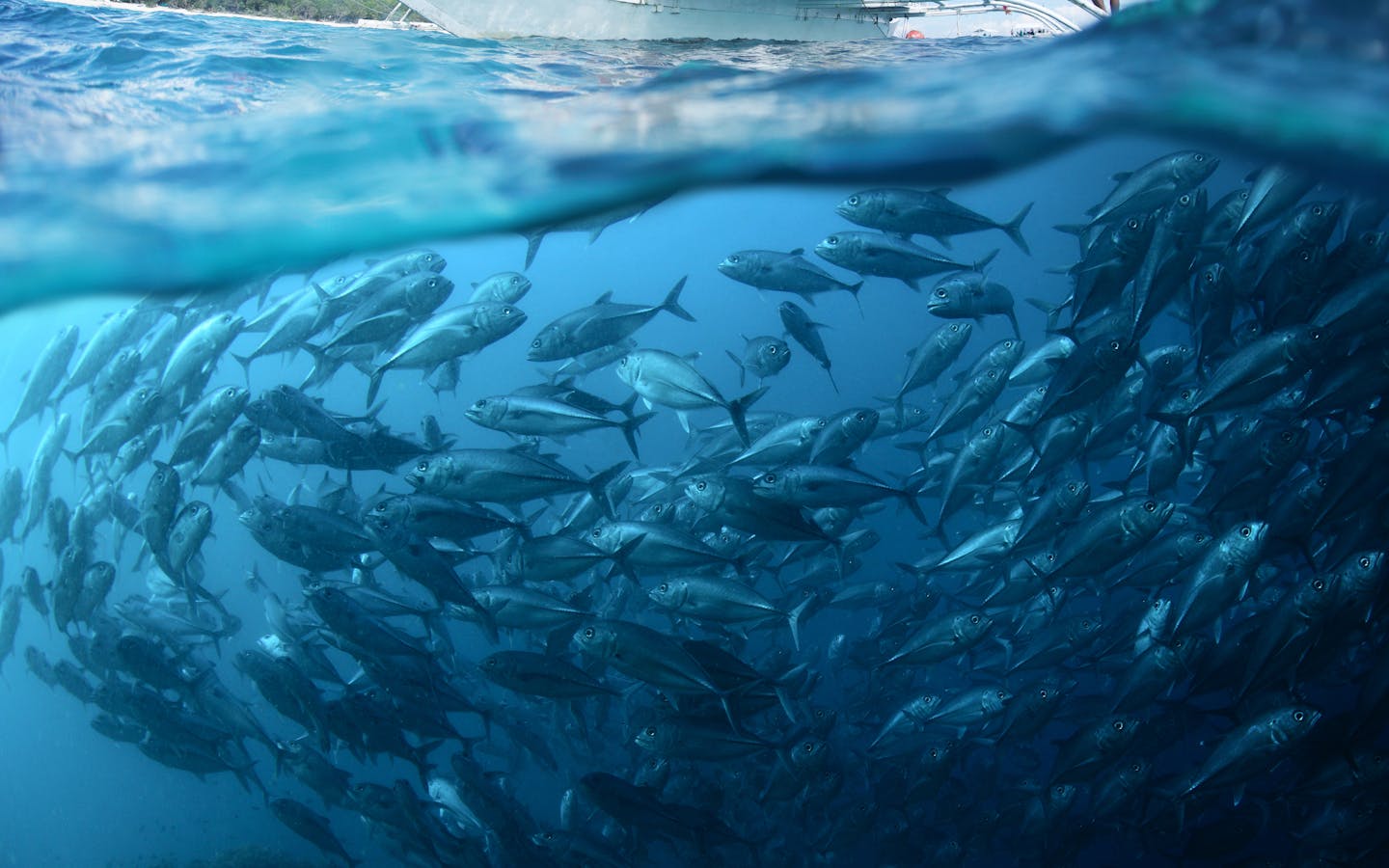
-
Livelihoods
We secure livelihoods and food security for Filipinos
© CI/Aya Uraguchi -
Coastal Resilience
We work to increase coastal resilience against storms
© CI/Lynn Tang -
Protected Areas
We work with national and local governments to establish and manage protected areas
© Dudarev Mikhail -
Biodiversity
We protect unique biodiversity together with local communities
© Olivier Langrand
Encompassing over 7,000 islands, the Philippines’ large landscapes and long coastlines hold some of the world’s richest terrestrial, coastal and marine environments.
It is also one of the world’s 17 mega-biodiverse countries, featuring more than 20,000 species of plants and animals found nowhere else in the world.
These natural resources, which stretch 2.2 million square kilometres (849,425 square miles), are of critical importance. They provide food, fresh water, livelihoods and climate resilience to more than 100 million Filipinos. In fact, it is estimated that biodiversity contributes around 5% of the Philippines' gross domestic product and supports livelihoods for nearly 15% of the country’s labor force.
The forests and oceans of the Philippines sequester vast amounts of carbon — playing a significant role in the global solution to climate change. Regionally, the Philippines is a part of the Coral Triangle, a transboundary seascape which more than 130 million people from five nations rely upon.
In recent times, accelerating development has led to increasing pressures on nature. Population growth, weak land use planning, industrialization and unsustainable land and sea use have taken a toll on its natural resources, while erratic storms have ravaged its coasts.
There is still time. We must work together to protect nature for Filipinos and the world.
Our role
Conservation International Philippines has worked with the government and local communities to value and protect healthy ecosystems since 1995. Through science, policy and fieldwork, we aim to protect nature, and provide innovative solutions to key environmental issues – such as the loss of mangroves, deforestation, climate change, unsustainable fishing and the illegal wildlife trade.
We work both on land and sea — from the magnificent mountain range of Mount Mantalingahan in Palawan to the productive Sulu-Sulawesi Seascape — to safeguard the well-being of all Filipinos for generations ahead.
Join us
Sign up to receive the latest news about our conservation work.
What are the issues?
It is estimated that more than half of the Philippines’ old-growth forests have been lost to agriculture, slash-and-burn farming, forest fires and illegal logging. Compounded by a growing rural population and poor land management, deforestation poses a serious threat to agriculture, livelihoods and ecosystem functions such as fresh water and erosion prevention.
Mangrove cover in the Philippines has declined by 43% between 1918 and 2000 due to coastal development, conversion for aquaculture and clearing for firewood. This loss has left coastal communities vulnerable, as mangroves act as both storm buffers and nurseries for fish.
According to the United Nations, the Philippines ranks as the third nation most at risk from the effects of climate change. As climate change intensifies, storm surges will become increasingly unpredictable — illustrated to the world when more than 6,000 lives and 900,000 homes were lost in 2013 to Typhoon Yolanda (also known as Typhoon Haiyan). Shifting rainfall patterns and rising average temperatures are predicted to affect the livelihoods and food security of farmers and fishers, and some coastal communities may lose their homes to sea-level rise.
The Philippines is a source of wildlife and wildlife products, and a transit point for trafficking — which is on the rise. Driven by both national and international trade, the loss of certain crucial species is already altering the natural balance of ecosystems, reducing their productivity for those livelihoods that depend upon them — drawing more and more Filipinos into the criminal world.
Our work
Conservation International is working with the government and local communities in the Philippines to protect the country’s natural assets — forests, mangroves and seas — for the long-term benefit of generations of Filipinos and people around the world.
-
Mount Mantalingahan: Working towards zero net...
In the highest peak of Palawan, Conservation International encourages indigenous communities to protect their natural assets and seeks to protect this mountain in perpetuity.
© CI/photo by Lynn Tang -
Green-gray: A shield against climate change
Conservation International works to safeguard communities against climate change impacts such as storm surges, through an innovative green-gray approach.
© Nandini Narayanan -
Verde Island Passage: Developing conservation at...
Conservation International supports the establishment and expansion of protected areas and mangrove rehabilitation, while training locals to improve practices.
© CI/photo by Sterling Zumbrunn -
Quirino Protected Landscape: Fostering...
Conservation International and the Quirino Forest Carbon Project combats climate change through reforestation and incentivizing farmers to change behaviors.
© CI/Yoji Natori -
Sulu-Sulawesi Seascape: Conservation across...
Conservation International works with the governments of Indonesia, Malaysia and the Philippines to establish and manage marine protected areas for people, and threatened species such as sea turtles.
© Keith A. Ellenbogen -
Project Protect: Conserving biodiversity in the...
We work to combat the threats to wildlife and the causes of biodiversity loss in the Philippines while taking into consideration environmental threats such as habitat loss, unsustainable harvesting, and pollution.
© USAID Philippines











